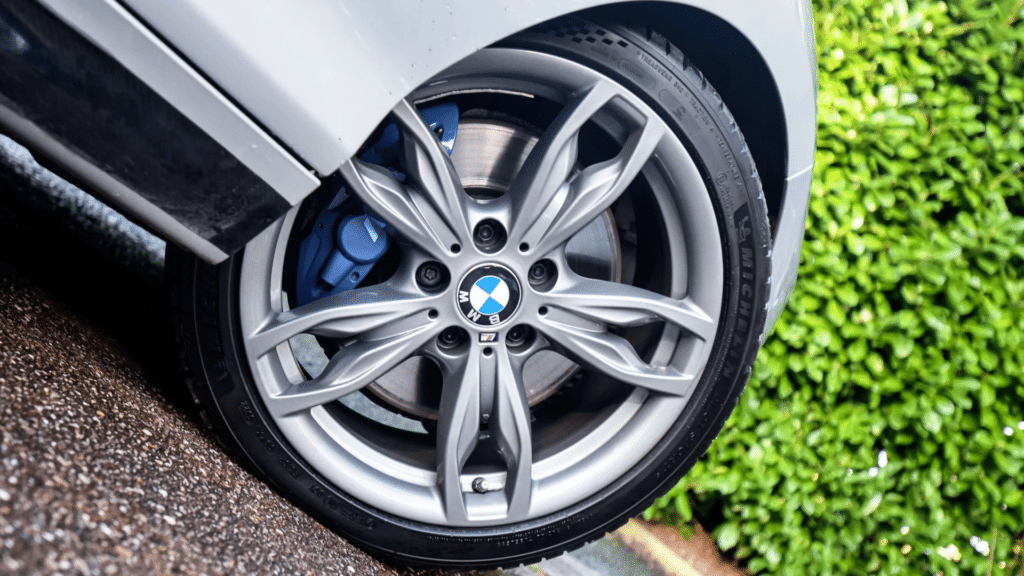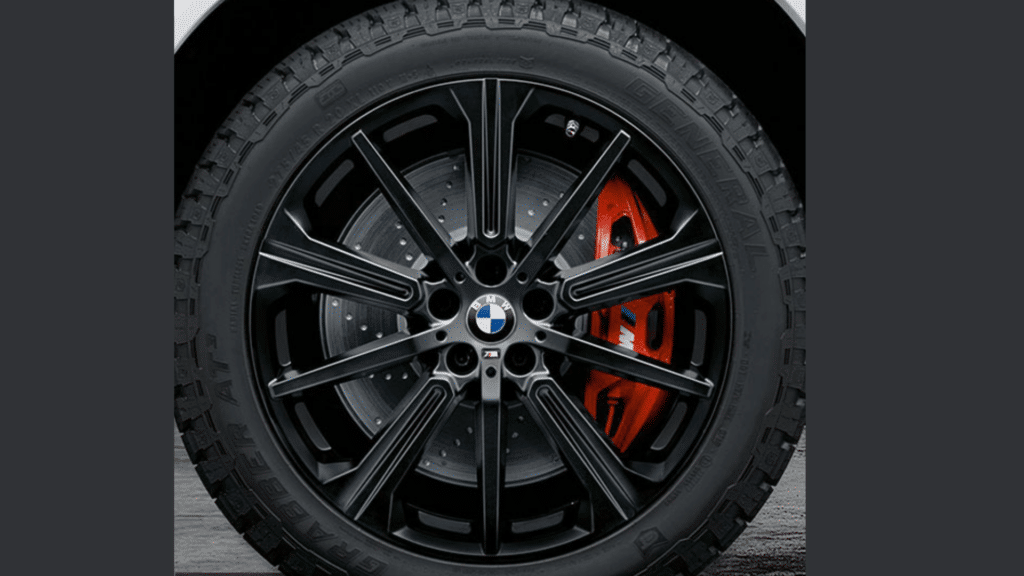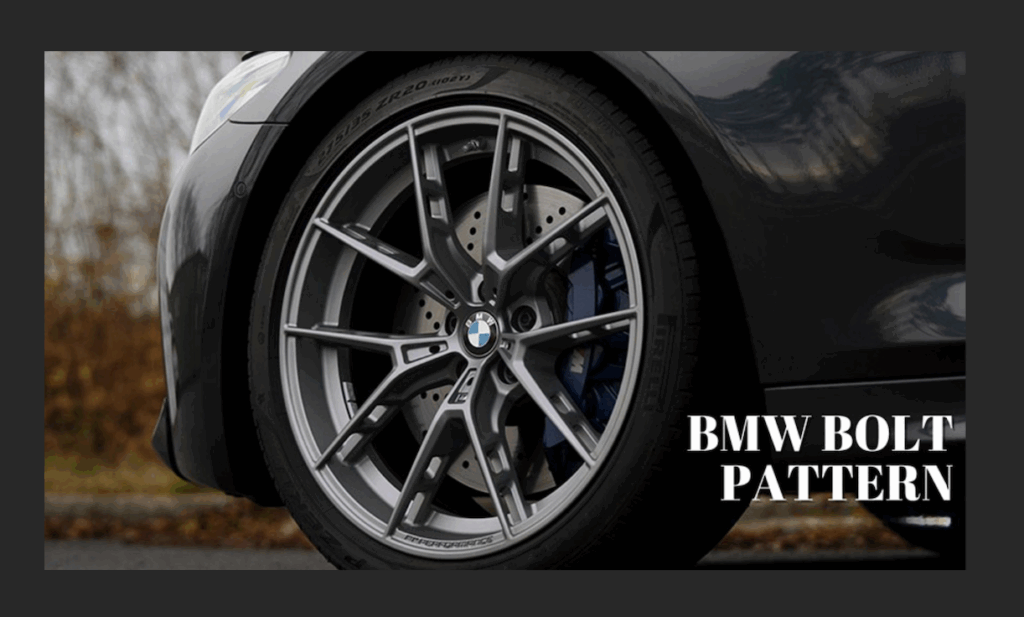Welcome to my guide on BMW Bolt Patterns. Bolt patterns are critical for the correct fit of wheels on your vehicle, affecting everything from alignment to safety.
For BMW owners, understanding these patterns is essential for proper maintenance and ensuring parts compatibility. Whether you’re looking to replace wheels or just aiming to enhance your knowledge, I’ve got you covered.
In this article, I’ll walk you through what bolt patterns are, why they matter for your BMW, and how you can find and match the right pattern to your model. I’m here to solve any confusion about wheel fitting and help you make informed decisions.
Trust me to guide you with reliable, easy-to-understand information tailored to your needs. I’m focused on giving you exactly what you came here for—practical insights into BMW bolt patterns. Let’s dive in!
What is the BMW Bolt Pattern?

A bolt pattern is how your wheel connects to your car. Think of it like a puzzle piece that needs to match perfectly. For BMWs, this is super important to get right.
Most BMWs use a 5×120 bolt pattern. Let me break that down for you:
- The “5” means there are five lug nuts
- The “120” means the circle they make is 120 millimeters across
But wait! Not every BMW uses this pattern. Some models are different:
The older BMW 3-Series (E30) from the 1980s and early 1990s uses a 4×100pattern. This means:
- Four lug nuts instead of five
- They make a 100-millimeter circle
Some modern BMWs, like the newer 1-Series and 2-Series (F40 and F44), use a 5×112 pattern. This is because they share parts with Mini, which BMW owns.
Here’s something cool: The center bore (that big hole in the middle of the wheel) on most BMWs is 72.6mm. This helps the wheel sit perfectly centered on your car.
Why Does This Matter?
Getting the wrong bolt pattern can be a costly mistake. Your wheels won’t fit right, and that’s dangerous. It’s like wearing shoes that don’t match – except this could damage your car!
When you’re buying new wheels, you need to know:
- Your BMW’s model
- The year it was made
- The specific bolt pattern
Pro tip: If you’re not sure about your BMW’s bolt pattern, look in your owner’s manual. You can measure it yourself, but be careful to measure from the center of one lug to the center of the opposite lug.
Here’s a quick guide for common BMW models:
- 3-Series (1992-present): 5×120
- 5-Series (all modern): 5×120
- X5 (all years): 5×120
- M3/M4: 5×120
- 1-Series (new): 5×112
Remember this: Never try to force wheels with the wrong bolt pattern to fit. It’s not safe, and it could wreck your car.
If you’re getting new wheels, always double-check the bolt pattern. It’s better to spend a few minutes checking than to waste money on wheels that don’t fit.
I often tell my customers: “Measure twice, buy once.” This simple rule can save you from a big headache later.
Understanding BMW Bolt Patterns and Their Compatibility
The Basics of BMW Bolt Patterns
I’ve worked with BMWs for over two decades, and I can tell you that understanding bolt patterns is crucial.
Think of it as your wheel’s DNA – it must match perfectly. The bolt pattern consists of two key numbers: the number of lugs and the diameter of the circle they form.
Most modern BMWs use a 5×120 bolt pattern. This means you’ll find five lug holes arranged in a circle with a 120mm diameter.
I remember when this became BMW’s standard – it was a game-changer for wheel compatibility across their lineup.
When I’m helping customers, I always check these three things:
- Lug count (usually 5)
- Bolt circle diameter (typically 120mm)
- Center bore (72.6mm for most BMWs)
Evolution of BMW Bolt Patterns Through Generations
I’ve seen BMW’s bolt patterns evolve over the years, and it’s fascinating. The classic E30 3-Series used a 4×100 pattern, while modern BMWs mostly stick to 5×120. However, some newer models, like the F40 1-Series, use 5×112.
What’s interesting is how this affects wheel compatibility across generations. In my workshop, I often see people trying to fit newer wheels on older BMWs. Here’s what you need to know:
- Pre-1992 3-Series: 4×100
- 1992-2019 (most models): 5×120
- Some newer models (2019+): 5×112
Critical Compatibility Factors
After working on countless BMWs, I’ve learned that bolt patterns are just the start. You also need to consider:
Offset (ET): This affects how your wheel sits in the wheel well. I usually recommend:
- Front: ET 35-40
- Rear: ET 35-45 (depending on the model)
Center Bore: BMW’s standard 72.6mm center bore is crucial. I always tell my clients that using hub-centric rings for wheels with larger center bores is fine, but never try to modify the bore itself.
My Personal Recommendations
From my years of experience, here’s what I suggest:
- Always verify measurements: Even if the seller says it fits, check yourself. I’ve saved countless customers from costly mistakes this way.
- Keep it OEM-friendly: While aftermarket wheels can be great, staying within BMW’s specifications ensures the best performance. I’ve seen too many issues with improper fitments.
- Consider future plans: If you’re thinking about brake upgrades, factor that into your wheel choice. I learned this lesson early in my career.
Comparisons between BMW’s and Other Brands’ Bolt Patterns with Price
After years of working with various car brands, I’ve put together this detailed comparison. I know how confusing bolt patterns can be, especially when you’re cross-shopping between brands.
Common Luxury Brand Bolt Patterns & Wheel Costs
| Brand & Model | Bolt Pattern | Center Bore | Average OEM Wheel Cost | Average Aftermarket Cost | Personal Notes |
|---|---|---|---|---|---|
| BMW 3-Series | 5×120 | 72.6mm | $400-600 | $200-400 | I recommend sticking with the 5×120 pattern – it gives you the most options for upgrades |
| Mercedes C-Class | 5×112 | 66.6mm | $500-700 | $250-450 | More expensive than BMW wheels, but I’ve found they last longer |
| Audi A4 | 5×112 | 57.1mm | $450-650 | $200-400 | Great compatibility with VW wheels – a money-saving tip I share with customers |
| Lexus IS | 5×114.3 | 60.1mm | $400-600 | $180-350 | Most affordable among luxury brands, and I rarely see fitment issues |
Performance Models Comparison
| Brand & Model | Bolt Pattern | Center Bore | Average OEM Wheel Cost | Average Aftermarket Cost | Personal Notes |
|---|---|---|---|---|---|
| BMW M3/M4 | 5×120 | 72.6mm | $800-1,200 | $400-800 | I always recommend forged wheels for M cars – worth the extra cost |
| Mercedes-AMG C63 | 5×112 | 66.6mm | $900-1,300 | $500-900 | Pricey but the widest selection of premium wheels |
| Audi RS4 | 5×112 | 57.1mm | $850-1,250 | $450-850 | Best value for money in my experience |
| Lexus RC F | 5×114.3 | 60.1mm | $700-1,100 | $350-750 | Most affordable performance option with good wheel choices |
SUV/Crossover Comparison
| Brand & Model | Bolt Pattern | Center Bore | Average OEM Wheel Cost | Average Aftermarket Cost | Personal Notes |
|---|---|---|---|---|---|
| BMW X5 | 5×120 | 72.6mm | $600-900 | $300-600 | From my experience, stick with 19″ or larger for the best looks |
| Mercedes GLE | 5×112 | 66.6mm | $700-1,000 | $350-650 | Expensive but the best quality, in my opinion |
| Audi Q7 | 5×112 | 57.1mm | $650-950 | $300-600 | Great winter wheel options are available |
| Lexus RX | 5×114.3 | 60.1mm | $500-800 | $250-550 | Best value for money in the luxury SUV segment |
My Professional Tips:
- These prices reflect 2024 market averages I’ve seen in my shop
- Add $150-200 per wheel for run-flat technology
- Forged wheels typically cost 40-60% more than cast wheels
- Always factor in TPMS sensors ($60-100 each)
A Money-Saving Secret: I often recommend looking at previous model year wheels. They’re usually 20-30% cheaper and fit just as well.
Remember, while BMW’s 5×120 pattern might seem limiting, I’ve found it actually offers excellent aftermarket support. Plus, some older Porsche wheels can fit with the right hub adapters – a little trick I’ve used for unique builds.
List of the Correct Bolt Pattern for Different BMW Models
Let me break this down for you in a simple way.
Here’s your go-to guide for BMW bolt patterns. I’ve organized this based on series and years to make it super easy to find your model:
BMW Bolt Pattern Quick Reference Table
| Series | Years | Bolt Pattern | Center Bore | Notable Exceptions |
|---|---|---|---|---|
| 1-Series | 2004-2019 | 5×120 | 72.6mm | F40 (2019+): 5×112 |
| 2-Series | 2014-2019 | 5×120 | 72.6mm | F44 (2020+): 5×112 |
| 3-Series | 1982-1991 | 4×100 | 57.1mm | E30 models only |
| 3-Series | 1992-2018 | 5×120 | 72.6mm | – |
| 3-Series | 2019+ | 5×112 | 66.5mm | G20 platform |
| 4-Series | 2014+ | 5×120 | 72.6mm | G22 (2021+): 5×112 |
| 5-Series | All years | 5×120 | 72.6mm | G30 (2017+): Some models 5×112 |
| 6-Series | All years | 5×120 | 72.6mm | – |
| 7-Series | All years | 5×120 | 72.6mm | G70 (2023+): 5×112 |
| 8-Series | All years | 5×120 | 72.6mm | – |
| X1 | 2009-2015 | 5×120 | 72.6mm | F48 (2016+): 5×112 |
| X2 | All years | 5×112 | 66.5mm | – |
| X3 | 2003-2017 | 5×120 | 72.6mm | G01 (2018+): 5×112 |
| X4 | 2014-2018 | 5×120 | 72.6mm | G02 (2019+): 5×112 |
| X5 | All years | 5×120 | 72.6mm | G05 (2019+): Some models 5×112 |
| X6 | All years | 5×120 | 72.6mm | G06 (2020+): Some models 5×112 |
| X7 | All years | 5×112 | 66.5mm | – |
| M2 | 2016-2021 | 5×120 | 72.6mm | G87 (2023+): 5×112 |
| M3/M4 | All years | 5×120 | 72.6mm | G80/G82 (2021+): 5×112 |
| M5/M6 | All years | 5×120 | 72.6mm | F90 (2018+): Some models 5×112 |
Pro Tips from my experience:
- Always double-check your specific model – some special editions might differ
- If your BMW is 2019 or newer, there’s a good chance it’s 5×112
- When in doubt, measure it yourself or check your owner’s manual
How to Identify the Correct Bolt Pattern for a Specific BMW Model?

Finding Your Bolt Pattern
First, check your owner’s manual. It’s usually in the “Technical Specifications” or “Wheel and Tire” section. I always start here because it’s the most reliable source.
BMW makes this easy by listing the bolt pattern along with other wheel specs.
Can’t find your manual? No problem. Look for a sticker inside your driver’s door frame or in the glove box. I’ve found that BMWs usually have this information right there.
Measuring It Yourself
Sometimes, you need to measure it yourself. Here’s what I use:
- Tape measure or caliper
- Piece of paper and pencil
- Wheel pattern gauge (if you have one)
- Flashlight for better visibility
Here’s my step-by-step process:
- Count the Lugs Start with the obvious – count your lug holes. Most BMWs have five, but some older models have four.
- Measure the Pattern For 5-lug wheels, measure from the center of one lug hole to the center of the hole across from it (not next to it). I’ve found this gives you the most accurate measurement.
Pro tip: If you’re measuring a 4-lug wheel, measure from center to center of opposite holes. Multiply this number by 1.414 to get your bolt circle diameter.
The Center Bore
This is something I always check. The center bore is just as important as the bolt pattern. For most BMWs, it’s 72.6mm, but newer models might be different. I use a caliper for this measurement, but it needs to be exact.
Common Mistakes to Avoid
I’ve seen people make these mistakes too often:
- Measuring from edge to edge instead of center to center
- Forgetting to convert inches to millimeters
- Not checking the center bore size
- Assuming all BMW models use the same pattern
My Quick Verification Method
When I’m in a hurry, here’s what I do:
- Take a piece of string
- Place it at the center of one lug hole
- Stretch it to the center of the farthest hole
- Mark and measure this length
Remember: Modern BMWs typically use either 5x120mm or 5x112mm patterns. If you measure something significantly different, measure again. I’ve saved countless customers from buying the wrong wheels by double-checking measurements.
How to Maintain Bolt Patterns on Your BMW?
- Clean your wheel hubs during every tire rotation using a wire brush and brake cleaner. This helps prevent rust and buildup that can affect wheel fitment.
- Always use a torque wrench – never an impact gun.
- For most BMWs, tighten lug bolts to 89–103 ft-lbs in a star pattern.
- Check for rust, rounded holes, or loose-feeling wheels – these are early signs of trouble.
- Keep a torque wrench, anti-seize, and a wire brush handy.
- Hand-start bolts to avoid cross-threading.
- Before winter, apply anti-seize to the hub and inspect bolt patterns.
- Don’t overtighten the spare – be gentle and use proper tools.
- Clean wheels monthly and check torque every 1,000 miles.
- Track torque checks and get alignments twice a year.
Remember, your BMW’s bolt pattern is part of its safety system. Treat it that way. I always say, “Maintenance isn’t expensive, but repairs are.”
Conclusion
I’ve covered a lot about BMW Bolt Patterns, from what they are to why they’re crucial for your vehicle’s safety and performance.
Remember, getting these patterns right is not just about aesthetics; it’s about ensuring your car runs smoothly and safely.
If you’re unsure about measurements or fitting, don’t hesitate. I urge you to consult a professional. They have the right tools and expertise to help you maintain your BMW effectively.
Take action today. Check your bolt patterns regularly and make any necessary adjustments.
It’s a simple step that goes a long way in keeping your ride in top shape. Thanks for reading, and stay safe on the roads!


